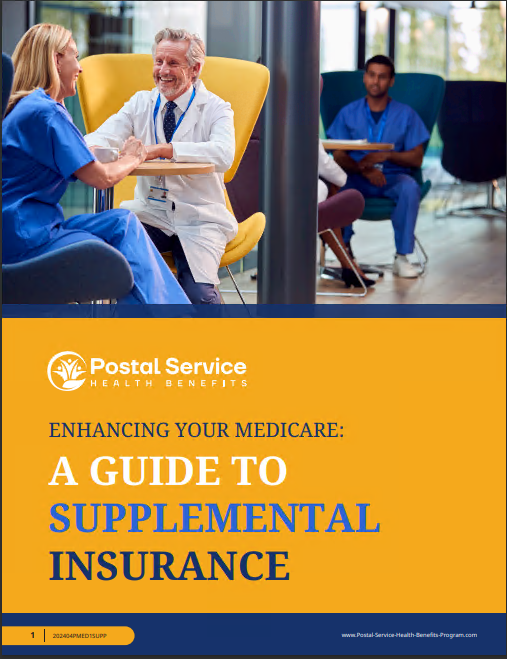Understanding Medicare's Role in the Postal Service Health Benefits (PSHB) Program
Exploring the Crucial Intersection of Medicare and the PSHB Program
As postal employees and retirees embark on the journey of navigating healthcare coverage under the Postal Service Health Benefits (PSHB) Program, understanding the pivotal role of Medicare becomes paramount. Medicare, the federal health insurance program primarily serving individuals aged 65 and older, plays a central role in shaping the landscape of healthcare benefits available to postal workers and their families. Let’s delve deeper into how Medicare intersects with the PSHB Program, exploring eligibility criteria, coverage options, coordination of benefits, and implications for healthcare access and retirement planning.
Eligibility Criteria for Medicare
Medicare eligibility serves as a cornerstone for accessing healthcare benefits under the PSHB Program. For most individuals, Medicare eligibility commences at age 65, encompassing Medicare Part A (hospital insurance) and Part B (medical insurance). However, eligibility may also extend to individuals under 65 with certain disabilities or medical conditions. As postal employees approach retirement age, understanding Medicare’s eligibility criteria and enrollment process becomes crucial. By enrolling in Medicare Part A and Part B during their initial enrollment period, eligible postal workers ensure seamless coordination of benefits between Medicare and the PSHB Program, laying the foundation for comprehensive healthcare coverage in retirement.
Coverage Options and Coordination of Benefits
The interplay between Medicare and the PSHB Program offers postal employees a spectrum of coverage options and coordination of benefits. While Medicare provides foundational coverage through Part A and Part B, postal workers may also access additional benefits through PSHB plans, such as prescription drug coverage, dental, vision, and supplemental health benefits. Understanding how Medicare coordinates with PSHB plans—whether as primary or secondary coverage, and the nuances of copayments, deductibles, and coverage limitations—is imperative for postal employees to optimize their healthcare benefits and minimize out-of-pocket expenses. Through thoughtful consideration of coverage options and coordination of benefits, postal workers can tailor their healthcare coverage to meet their evolving needs and preferences.
Implications for Healthcare Access and Retirement Planning
Medicare’s integration into the PSHB Program carries significant implications for healthcare access and retirement planning among postal employees and retirees. By incorporating Medicare Part B into PSHB plans for future retirees, the program extends coverage options and enhances healthcare access for individuals transitioning into retirement. This integration also underscores the importance of strategic retirement planning as postal workers evaluate the impact of Medicare enrollment on premiums, coverage, and coordination of benefits. By proactively considering Medicare’s role in retirement planning, postal employees can make informed decisions to safeguard their health and financial security in retirement, ensuring a smooth transition into post-employment healthcare coverage.
Navigating Medicare's Complexities with Confidence
Navigating Medicare’s complexities requires a nuanced understanding of its rules and regulations, coupled with informed decision-making by postal employees and retirees. With various enrollment periods, coverage options, and coordination of benefits to navigate, individuals must equip themselves with knowledge and resources to make well-informed choices. Seeking guidance from licensed agents specializing in federal employee health benefits or attending Medicare educational workshops can provide invaluable insights and assistance in navigating Medicare’s complexities effectively. By empowering themselves with information and support, postal workers can navigate the intricacies of Medicare with confidence, ensuring continued access to essential healthcare benefits under the PSHB Program.
Conclusion
Medicare’s role in the Postal Service Health Benefits (PSHB) Program serves as a linchpin in shaping healthcare coverage for postal employees and retirees. By comprehensively understanding Medicare’s eligibility criteria, coverage options, coordination of benefits, and implications for healthcare access and retirement planning, postal workers can make informed decisions to optimize their healthcare benefits and financial security in retirement. With awareness, preparation, and access to relevant resources, postal employees can navigate the complexities of Medicare with confidence, ensuring a seamless transition into post-employment healthcare coverage under the PSHB Program.
Are you a postal employee or retiree seeking to navigate Medicare’s role in the Postal Service Health Benefits (PSHB) Program? Download our comprehensive guide to understanding Medicare’s impact on the PSHB Program to gain valuable insights and practical tips for optimizing your healthcare benefits and retirement planning. Connect with licensed agents specializing in federal employee health benefits to receive personalized guidance and assistance in navigating Medicare’s complexities with confidence. Empower yourself with knowledge and take control of your healthcare journey with Medicare and the PSHB Program.





